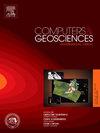拉普拉斯深系:考虑地球物理流体的dUT1预测方法及应用
IF 4.4
2区 地球科学
Q1 COMPUTER SCIENCE, INTERDISCIPLINARY APPLICATIONS
引用次数: 0
摘要
提高深度学习模型的准确性和可靠性是一项至关重要但具有挑战性的任务。贝叶斯方法在实现这一目标方面通常效率低下,因为它的计算复杂性令人生畏。一种有希望的替代方法是基于具有不同初始参数的模型的集成,这将导致不同的模型预测。然而,这种方法主要基于数据的高斯分布假设,这可能会受到异常值、分布外数据的存在以及集成成员之间缺乏多样性的影响。在这里,我们提出考虑数据的拉普拉斯分布,并引入拉普拉斯深度集成(LDE)。我们提出了LDE的公式,并表明它类似于熟悉的L1范数最小化,因此对异常值和分布外数据更具弹性。我们还引入了LDE的排斥形式,它增强了集合成员之间的多样性,并且对贝叶斯方法具有非渐近收敛性。我们提出了一个在大地测量学领域的应用,用于dUT1的短期预测,dUT1表示由于地球物理流体(即大气、海洋、陆地水文和海平面变化)的影响,世界时(与地球自转有关)与协调世界时(基于原子钟)的偏差。我们表明,dUT1可以提前10天进行高精度预测。我们证明LDE不仅比高斯模型更准确,而且与其他最先进的预测相比,排斥性LDE平均提高了12%。这一改进对于依赖精确计时的各种应用(如卫星导航)具有相当重要的意义。本文章由计算机程序翻译,如有差异,请以英文原文为准。
Laplacian deep ensembles: Methodology and application in predicting dUT1 considering geophysical fluids
Increasing the accuracy and reliability of deep learning models is a crucial yet challenging task. The Bayesian approach is typically inefficient in achieving this goal, because of its daunting computational complexity. A promising alternative approach is based on ensembling of models with disparate initial parameters, which result in different model predictions. However, this approach is mainly based on the assumption of Gaussian distribution for data, which might suffer from the presence of outliers, out-of-distribution data, and the lack of diversity among ensemble members. Here we propose to consider Laplacian distribution for data, and introduce Laplacian Deep Ensembles (LDE). We present the formulation of LDE and show that it is akin to the familiar L1 norm minimization, thus being more resilient to outliers and out-of-distribution data. We also introduce the repulsive form of the LDE that enhances the diversity among ensemble members and is aysmptotically convergent to the Bayesian approach. We present an application in the field of geodesy, for the short-term prediction of dUT1, which represents the deviation of universal time (tied to Earth’s rotation) from the coordinated universal time (based on atomic clocks) due to the effect of geophysical fluids (namely atmosphere, ocean, land hydrology, and sea-level variations). We show that dUT1 is predictable with high accuracy up to 10 days ahead. We demonstrate that not only is LDE more accurate than its Gaussian counterpart, but also the repulsive LDE represents on average 12% improvement compared to alternative, state-of-the-art predictions. This improvement has considerable importance for various applications that rely on precise timekeeping, such as satellite navigation.
求助全文
通过发布文献求助,成功后即可免费获取论文全文。
去求助
来源期刊

Computers & Geosciences
地学-地球科学综合
CiteScore
9.30
自引率
6.80%
发文量
164
审稿时长
3.4 months
期刊介绍:
Computers & Geosciences publishes high impact, original research at the interface between Computer Sciences and Geosciences. Publications should apply modern computer science paradigms, whether computational or informatics-based, to address problems in the geosciences.
 求助内容:
求助内容: 应助结果提醒方式:
应助结果提醒方式:


